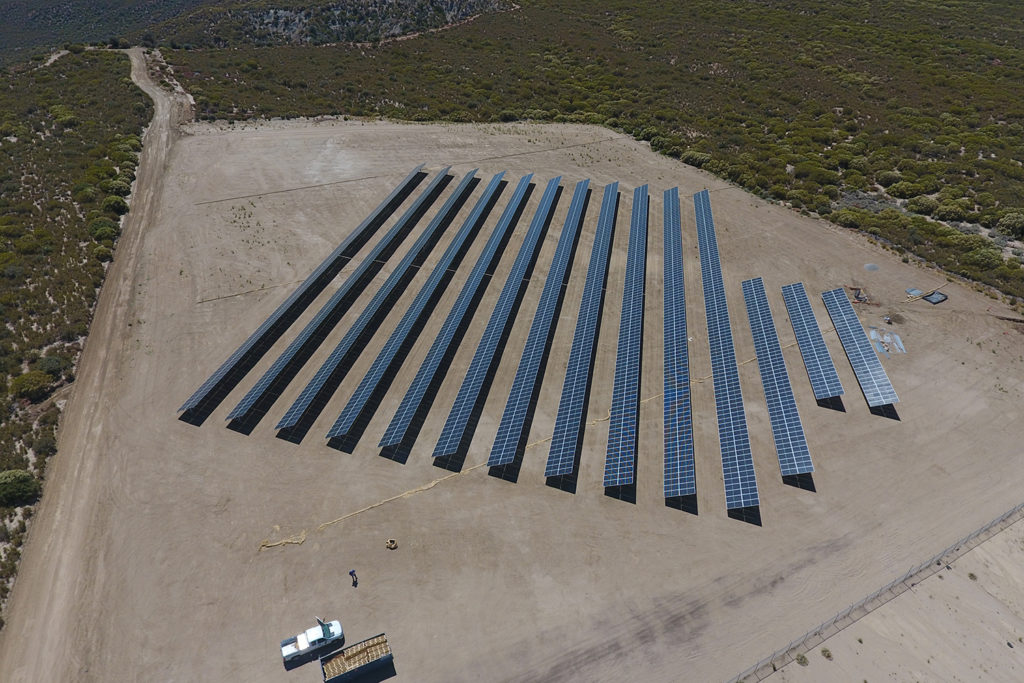
NRECA has won a $1 million, three-year grant from the Department of Energy to research the best ways for electric cooperatives to extend the benefits of solar power to low-income members.
“Eighty-five years ago, when there was no electricity in rural America, rural electric cooperatives were borne out of the need to address the lack of access to electricity in many rural households,” said Adaora Ifebigh, NRECA’s senior manager of research and development engagements and leader of NRECA’s Advancing Energy Access for All initiative. “Fast forward to today. While the needs are different, changes in the global and U.S. economies have presented new challenges and those communities are at risk of being left behind.”
The DOE grant funds NRECA’s Achieving Cooperative Community Equitable Solar Sources (ACCESS) project, the flagship effort of Advancing Energy Access for All, which spotlights co-ops’ efforts to ensure that grid advancements benefit everyone.
NRECA will work with six co-ops that are already conducting innovative solar projects designed to benefit low and moderate-income consumer-members. NRECA will partner with those co-ops to see what works best and develop resources to share with other co-ops across the country, Ifebigh said.
Co-ops that are participating in the project are: Anza Electric Cooperative in California, Oklahoma Electric Cooperative in Norman, Orcas Power & Light Cooperative in Eastsound, Washington; Roanoke Electric Cooperative in Aulander, North Carolina; BARC Electric Cooperative in Millboro, Virginia; and Kit Carson Electric Cooperative in Taos, New Mexico.
Roanoke EC has received nearly $500,000 in donations from clean energy groups to help low-income households buy solar panels in the co-op’s community solar garden as part of its SolarShare initiative. By earning credits from solar panel subscriptions, co-op members have the leverage to pay for needed health and safety repairs at their homes. These repairs prepare the home for full participation in the cooperative’s energy-efficiency financing program, Upgrade to $ave, said Marshall Cherry, Roanoke’s chief operating officer.
The SolarShare initiative has boosted participation in the co-op’s community solar garden from about 25% of its existing capacity to 100% within one year, he said.
“This is a way for us to bring more engagement in solar while meeting the pocketbook issues faced by member-owners in this economically distressed region,” Cherry said.
Oklahoma EC is helping Norman Public Schools save energy costs by building a 15-acre, 2-megawatt solar farm that will generate about 30% of the school’s power and reduce its costs. About half of the school district’s students are poor enough to qualify for free or reduced-price meals. Construction of the solar farm is expected to be completed in January.
“This project serves to uniquely help the city of Norman meet its 100% renewable energy goal, foster education of renewable energy and STEM education, assist local schools financially, and share the development of these programs on a national level through NRECA and DOE,” said Nick Shumaker, the co-op’s manager of system engineering.
In Southern California, Anza EC will soon complete construction of a 4-MW community solar array and battery storage project that will serve members of the Cahuilla Band of Cahuilla Indians and other low-income consumer-members. The project is expected to be finished by the end of November, said Kevin Short, the co-op’s general manager.
The cost of solar projects has dropped dramatically over the last several years, making it more affordable for co-ops to bring solar power to low-income communities and meet state requirements to boost the use of renewables, Short said.
“I think the historic price barrier is not as much of an obstacle anymore,” he said.
In Virginia, BARC EC’s “Solarize BARC” program combines battery storage, electric vehicle charging and utility-scale, rooftop and community solar programs for its members. By next summer, the distribution co-op will begin getting power from two solar projects totaling 7.5 MW of installed capacity from its generation and transmission co-op, Old Dominion Electric Cooperative. BARC is engaged with NRECA’s ACCESS program to leverage a portion of these projects to create a program tailored for low- and middle-income members.
“When we launched Solarize BARC, it was about bringing the benefits of solar to all members,” BARC CEO Mike Keyser said. “Whether the barriers are physical or financial, we’re trying to make it accessible to everyone, and the ACCESS program is providing valuable technical assistance to achieve this mission.”
Erin Kelly is a staff writer at NRECA.